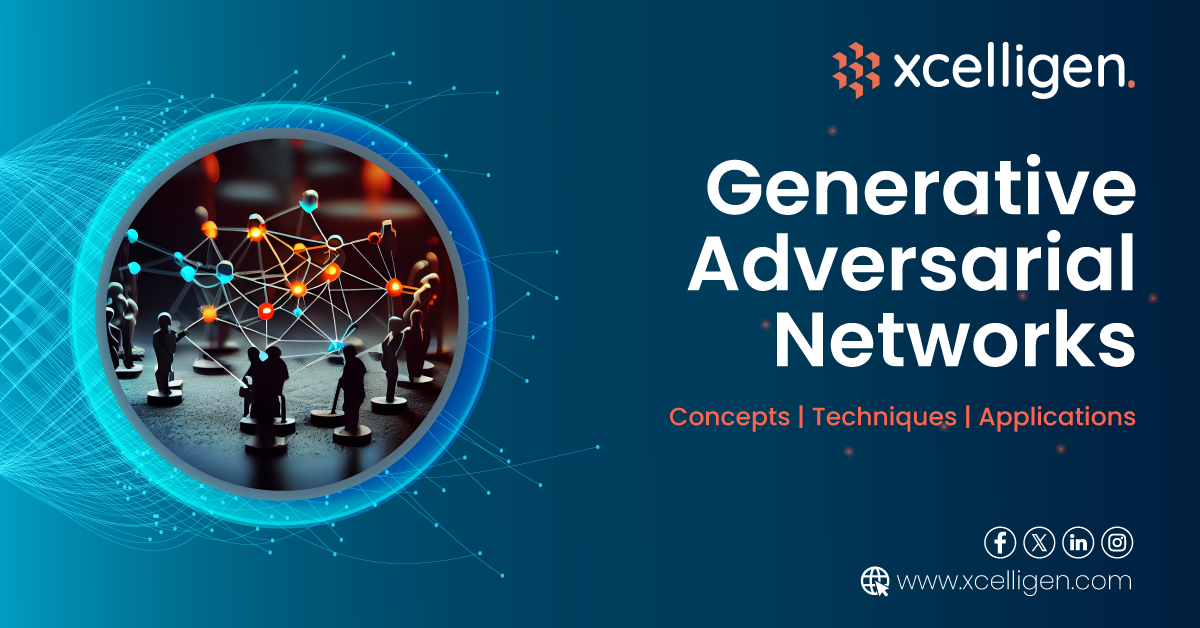In the ever-evolving field of artificial intelligence, one of the most intriguing developments is the rise of Generative Adversarial Networks (GANs). Since their introduction by Ian Goodfellow and his colleagues in 2014, GANs have revolutionized the way machines understand and generate new data. This blog post aims to demystify GANs, exploring their fundamental concepts, techniques, and a wide range of applications that are transforming industries.
Understanding GANs: The Basics
At its core, a GAN consists of two neural networks, aptly named the Generator and the Discriminator. These two networks are trained simultaneously in a unique setup that resembles a competitive game.
The Generator
Role: Create new data instances.
Goal: Generate data that is indistinguishable from real data.
The Discriminator
Role: Evaluate data instances.
Goal: Distinguish between real data (from the dataset) and fake data (created by the Generator).
The training process involves the Generator trying to produce increasingly convincing data, while the Discriminator strives to become better at detecting fake data. This competition drives both networks to improve their performance, leading to the generation of highly realistic data.
Techniques and Innovations in GANs
Over the years, numerous variants and improvements have been proposed to enhance the basic GAN framework:
- Conditional GANs
These GANs generate data based on specific conditions or labels, offering more control over the output. - Deep Convolutional GANs (DCGANs)
They use deep convolutional networks, improving the quality and stability of the generated images. - Progressive GANs
These GANs incrementally increase the resolution of generated images, leading to highly detailed outputs. - CycleGANs
Useful for image-to-image translation tasks where paired examples are not available. - StyleGANs
Developed by NVIDIA, they have pushed the boundary in generating ultra-realistic human faces.
Applications of GANs Across Industries
GANs find applications in a variety of fields, demonstrating their versatility and power:
- Art and Entertainment
Digital Art GANs are used to create stunning artworks and visual effects. - Gaming
Generating realistic textures and environments. - Healthcare
Medical Imaging: Enhancing the quality of medical scans for better diagnosis.
Drug Discovery: Creating molecular structures for new pharmaceuticals. - Autonomous Vehicles
Generating realistic traffic scenarios for training self-driving cars. - Education and Research
Simulating historical events or extinct species for educational purposes. - Fashion and Design
Designing new fashion items and virtual modeling of clothes.
Ethical Considerations and Challenges
While GANs offer immense possibilities, they also pose significant ethical challenges, particularly in the creation of deepfakes which can be used for misinformation. It’s crucial for researchers and developers to work on ways to detect GAN-generated fakes and to establish ethical guidelines for their use.
Future Prospects and Potential of GANs
As we look ahead, the potential of Generative Adversarial Networks continues to expand, promising transformative changes in various sectors. Here are some areas where GANs could make a significant impact in the near future:
- Enhancing Machine Learning Models
Data Augmentation: GANs can generate additional training data for machine learning models, particularly in fields where data is scarce or sensitive, like healthcare.
Unsupervised Learning: They offer advancements in unsupervised learning, pushing the boundaries of AI’s capabilities without the need for large labeled datasets. - Environmental Modeling
GANs could be instrumental in simulating environmental changes and impacts, aiding in climate change research and disaster preparedness. - Personalized Content Creation
In the realm of marketing and entertainment, GANs could enable the creation of highly personalized content, tailored to individual preferences and behaviors. - Advancements in Robotics
GANs could contribute to the development of more adaptive and intelligent robots, capable of understanding and interacting with their environment in more sophisticated ways. - Revolutionizing Traditional Industries
In sectors like agriculture, GANs can assist in crop monitoring and yield prediction, while in construction, they can aid in designing more efficient and sustainable structures.
Technical Challenges and Research Directions
Despite their impressive capabilities, GANs face several technical challenges that are currently the focus of extensive research:
- Training Stability
GANs are notoriously difficult to train. Achieving a balance where neither the Generator nor the Discriminator becomes too powerful is a delicate task. - Mode Collapse
This is a scenario where the Generator starts producing a limited variety of outputs, which is a significant issue in ensuring diverse and useful generation. - Evaluation Metrics
Quantifying the performance of GANs remains challenging. Developing robust metrics to evaluate the quality and diversity of generated data is crucial. - Energy Efficiency
As GANs become more complex, they require more computational power. Research is directed towards making them more energy efficient. - Bias and Fairness
Ensuring that GANs do not perpetuate or amplify biases present in training data is a critical area of ongoing research.
Conclusion
Generative Adversarial Networks represent a fascinating frontier in AI, blending creativity with technology. From art to healthcare, their applications are vast and continually growing. As we advance, it’s vital to harness their potential responsibly, ensuring they are used to benefit and enhance our world. GANs are not just a technological marvel; they are a testament to human ingenuity and the endless possibilities of AI.
